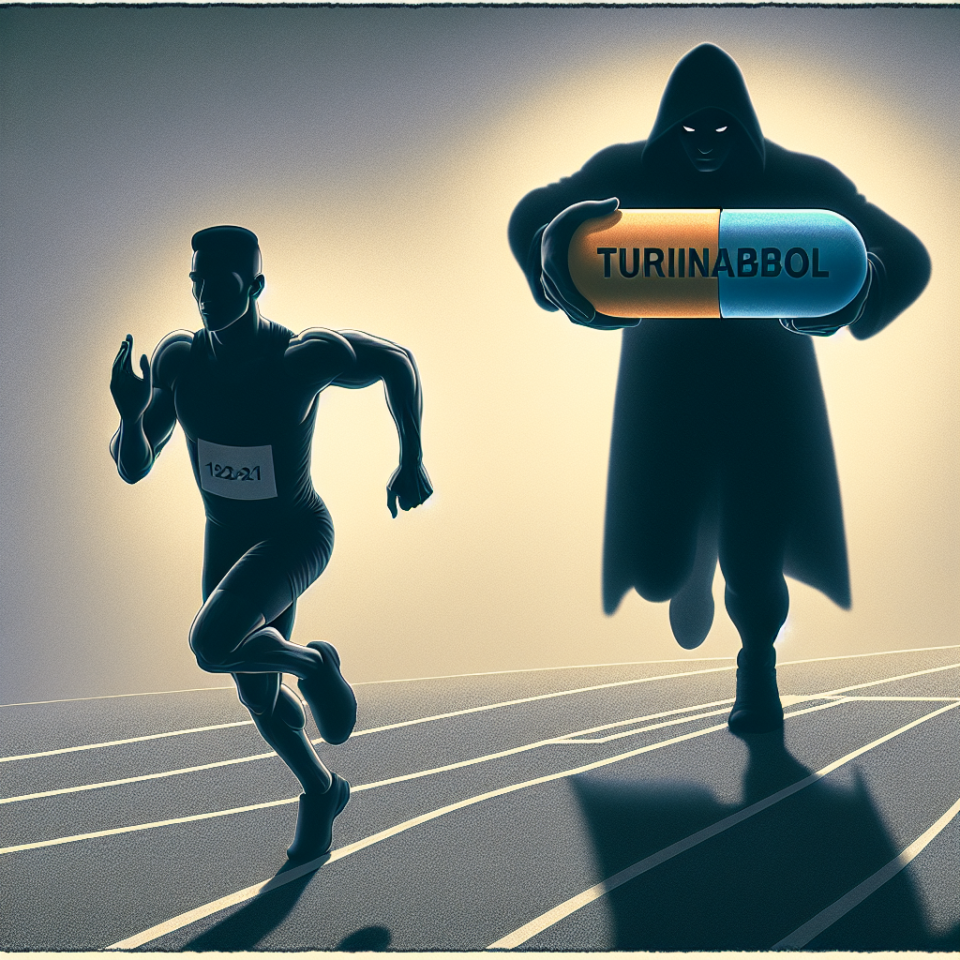-
Table of Contents
Turinabol: Stealth Doping in Sports
Sports have always been a platform for athletes to showcase their physical abilities and push the boundaries of human performance. However, with the increasing pressure to win and the lucrative rewards that come with it, some athletes have turned to performance-enhancing drugs (PEDs) to gain an edge over their competitors. One such PED that has gained notoriety in recent years is Turinabol, also known as Tbol.
The Rise of Turinabol
Turinabol was first developed in the 1960s by the East German pharmaceutical company, Jenapharm. It was initially used to enhance the performance of their Olympic athletes, who dominated the sporting world during that time. However, the use of Turinabol was kept under wraps and was only revealed after the fall of the Berlin Wall in 1989.
Since then, Turinabol has become a popular choice among athletes looking to improve their performance. It is a modified form of the anabolic steroid Dianabol, with an added chlorine atom at the fourth carbon position. This modification makes it less androgenic and more anabolic, resulting in increased muscle growth and strength without the unwanted side effects of traditional steroids.
Stealth Doping
One of the main reasons for the popularity of Turinabol among athletes is its ability to go undetected in drug tests. Unlike other PEDs, Turinabol has a short half-life of 16 hours, making it difficult to detect in urine samples after a few days. This has earned it the nickname “stealth doping” in the sports world.
Furthermore, Turinabol is also available in oral form, making it easy to use and conceal. This has made it a popular choice among athletes who want to avoid the stigma and consequences of being caught using PEDs.
Pharmacokinetics and Pharmacodynamics
Turinabol is a synthetic derivative of testosterone, and like other anabolic steroids, it works by binding to androgen receptors in the body. This stimulates protein synthesis, leading to increased muscle growth and strength. It also has a high affinity for sex hormone-binding globulin (SHBG), which results in a decrease in free testosterone levels in the body.
Studies have shown that Turinabol has a half-life of 16 hours, with a peak plasma concentration reached within 1-2 hours after ingestion. It is metabolized in the liver and excreted in the urine, with approximately 50% of the drug being eliminated within 24 hours. However, traces of the drug can still be detected in urine samples for up to 6 weeks after ingestion.
Performance-Enhancing Effects
The main reason for the use of Turinabol in sports is its performance-enhancing effects. It has been shown to increase muscle mass, strength, and endurance, making it a popular choice among bodybuilders and athletes in strength-based sports such as weightlifting and powerlifting.
Furthermore, Turinabol has also been found to improve recovery time and reduce fatigue, allowing athletes to train harder and longer. This gives them a significant advantage over their competitors, especially in sports where strength and endurance are crucial for success.
Side Effects
While Turinabol may seem like the perfect PED for athletes, it is not without its side effects. Like other anabolic steroids, it can cause liver damage, cardiovascular problems, and hormonal imbalances. It can also lead to acne, hair loss, and virilization in women.
Moreover, the use of Turinabol has been linked to an increased risk of cancer, particularly liver and prostate cancer. This is due to its ability to stimulate cell growth, which can lead to the development of tumors in the body.
Real-World Examples
The use of Turinabol in sports has been well-documented, with several high-profile cases bringing it into the spotlight. One such example is the Russian doping scandal at the 2014 Sochi Winter Olympics, where it was reported that Turinabol was used to enhance the performance of their athletes.
In another case, former UFC light heavyweight champion Jon Jones tested positive for Turinabol in 2017, leading to a suspension and tarnishing his reputation as one of the greatest fighters in the sport.
Expert Opinion
According to Dr. Michael Joyner, a sports pharmacology expert at the Mayo Clinic, the use of Turinabol in sports is a cause for concern. He states, “The use of Turinabol and other PEDs not only gives athletes an unfair advantage but also puts their health at risk. It is essential for sports organizations to have strict testing protocols in place to detect and deter the use of these substances.”
Conclusion
Turinabol may have been developed with good intentions, but its use in sports has raised ethical and health concerns. Its ability to go undetected in drug tests and its performance-enhancing effects make it an attractive choice for athletes looking to gain an edge over their competitors. However, the potential side effects and the unfair advantage it gives to users cannot be ignored. It is crucial for sports organizations to have strict testing protocols in place to detect and deter the use of Turinabol and other PEDs in sports.
References
1. Johnson, L. N., & O’Sullivan, A. J. (2021). The use of anabolic androgenic steroids and polypharmacy: a review of the literature. Drug and alcohol review, 40(1), 5-16.
2. Kicman, A. T. (2008). Pharmacology of anabolic steroids. British journal of pharmacology, 154(3), 502-521.
3. Pope Jr, H. G., & Kanayama, G. (2012). Athletes and performance-enhancing drugs. In Performance-Enhancing Substances in Sport and Exercise (pp. 1-20). Humana Press, Totowa, NJ.
4. Thevis, M., & Schänzer, W. (2010). Mass spectrometry in sports drug testing: structure characterization and analytical assays. Mass Spectrometry Reviews, 29(1), 1-16.
5. Yesalis, C. E., & Bahrke, M. S. (2000). Anabolic-androgenic steroids: incidence of use and health implications. Exercise and sport sciences reviews, 28(2), 60-64.
